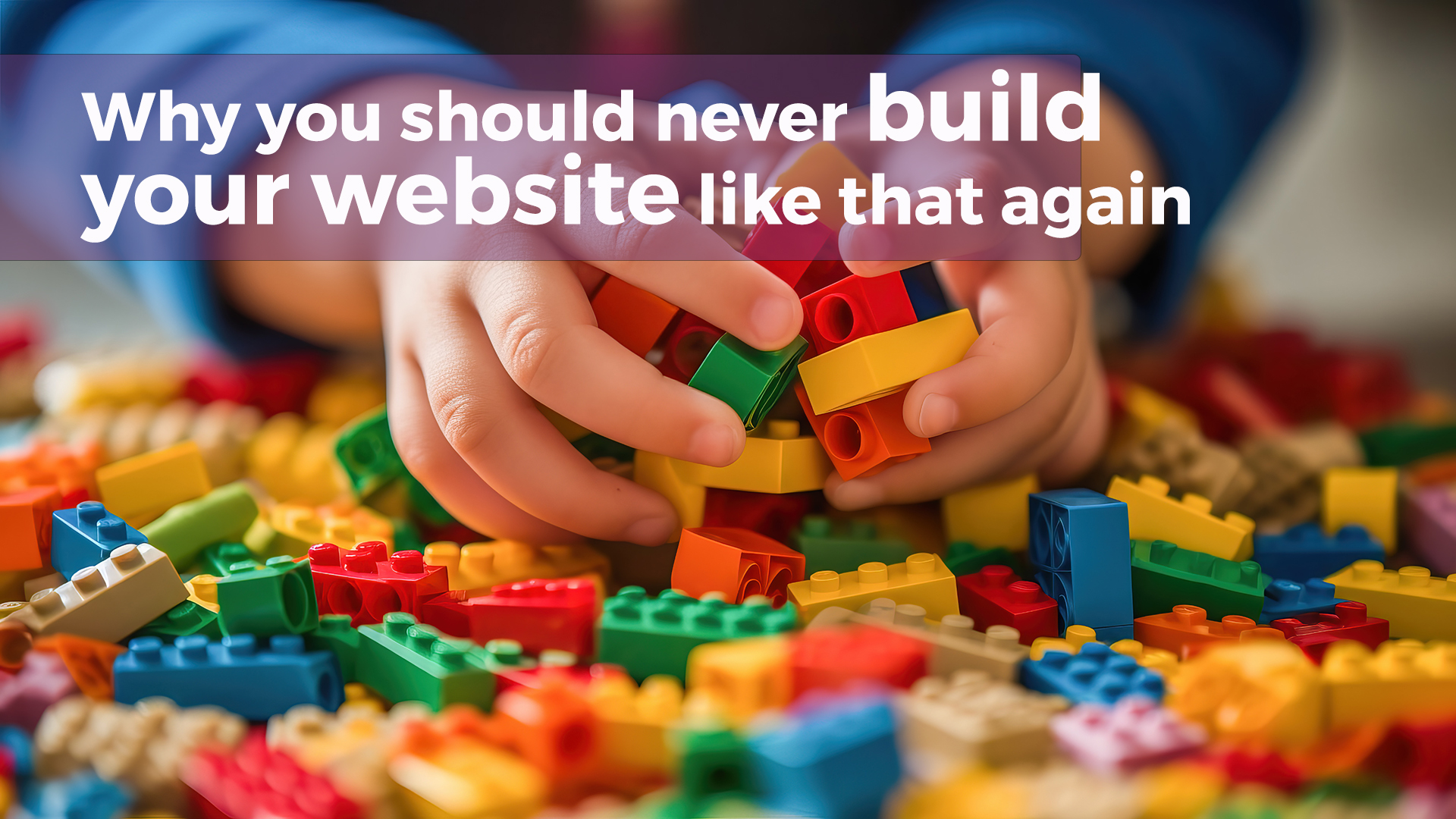Growth Driven Design (GDD) is a modern, agile approach to web development tailored to meet the specific questions and needs of businesses, especially startups in the tech industry. It's a departure from the traditional, often rigid method of web design.
GDD begins with launching a basic yet functional version of the website, known as a "launchpad site." From there, the site evolves based on continuous learning from user data and feedback. This approach ensures that the web design is always informed by real user needs and business objectives.
The Importance of Adaptive and Responsive Web Design for Tech Startups
For tech startups, a website is more than a digital presence; it's a dynamic tool for growth and user engagement. In an industry where trends and customer needs shift rapidly, having a website that can adapt and respond to these changes is crucial.
GDD aligns perfectly with this requirement. It offers a framework for startups to continuously refine their website, ensuring it remains relevant, user-friendly, and aligned with their evolving business strategies. This methodology directly answers the startups' need for a web presence that grows with them, reflecting their agility and innovation.
1 The Challenges of Traditional Web Design for Startups
Common Issues with Traditional Web Design
Traditional web design often follows a fixed, linear process. This methodology can lead to several key issues:
- Time-Consuming: The process from initial design to launch can take months, which is a significant time investment for startups that need to adapt and iterate quickly.
- Costly: Traditional design often requires a significant upfront investment. For startups operating within tight budgets, this can be a substantial financial burden.
- Inflexible: Once a traditional website is built, making changes can be difficult and expensive. It’s often built on assumptions rather than real user data, leading to less effective outcomes.
Challenges for Startups
For startups, these issues can be particularly acute:
- Need for Agility: Startups need to adapt rapidly to market feedback, but traditional web design's lengthy timelines hinder this agility.
- Budget Constraints: Startups often have limited resources. The high upfront cost and potential for additional expenses in traditional web design pose significant financial risks.
- Pivoting: Startups frequently pivot their business model based on market feedback. A rigid website design can be a major roadblock in this dynamic environment.
Startups are looking for solutions that align with their fast-paced, budget-conscious, and flexible nature. Traditional web design methodologies often fail to meet these critical needs, prompting a search for more adaptive and cost-effective alternatives like Growth Driven Design.
CHECK OUT : GDD Hands Down the Best Method For Results-Driven Website Design
2 Growth Driven Design – A Game Changer
Defining Growth Driven Design (GDD)
Growth Driven Design is a revolutionary approach to web design that addresses the specific concerns and queries of startups. Its core principles include:
- Iterative Development: Launch quickly with a basic site and enhance it over time based on user data.
- Focus on Impact: Prioritise changes that offer the most significant impact on meeting user needs and achieving business goals.
- Learning from Data: Make decisions based on user interactions and feedback, not assumptions.
Contrasting GDD with Traditional Web Design Methods
GDD stands in contrast to traditional web design in several keyways:
- Speed of Deployment: Unlike the lengthy process of traditional design, GDD allows for a quicker launch, a crucial factor for startups needing to establish an online presence fast.
- Budget-Friendly: GDD requires a smaller initial investment, with ongoing costs spread out over time, aligning well with the financial constraints of startups.
- Flexibility and Adaptability: GDD's iterative nature means startups can pivot or adjust their web strategy in real-time based on actual user data, an essential feature in the dynamic startup environment.
GDD emerges as a responsive and efficient solution to the common challenges faced by startups in traditional web design, offering a pathway to build a web presence that grows and evolves with their business.
3 Benefits of GDD for Tech Startups
Speed and Agility
Growth Driven Design allows tech startups to deploy their websites much faster than traditional methods. This quick launch means startups can establish an online presence rapidly, a critical factor in today's fast-paced market. Post-launch, GDD enables continuous iterations based on real-time data, allowing startups to make swift changes that align with their evolving business needs and user feedback.
Data-Driven Decisions
In GDD, decisions about the website's design and functionality are driven by analytics and user feedback, not guesswork. This approach ensures that every change made to the website is informed by actual user behaviour and preferences, leading to a more effective and user-centric online presence. For startups, this means a website that truly resonates with their target audience.
Scalability
GDD is inherently scalable, making it ideal for startups that experience rapid growth and change. As the startup evolves, its website can grow and adapt seamlessly, without the need for a complete overhaul. This flexibility is crucial for startups that may pivot their business model, expand their product lines, or enter new markets, ensuring their website remains a robust and relevant tool for growth.
4 Implementing GDD in a Startup Environment
Practical Tips for Adopting GDD
- Start with a Launchpad Website: Begin by creating a simple, functional website quickly. Focus on core elements that deliver value to your users.
- Gather and Analyse Data: Use tools like Google Analytics to understand how users interact with your site. Pay attention to user behaviour and feedback.
- Iterate Based on Insights: Make regular updates to your website based on the data you collect. Prioritise changes that have the most impact.
Integrating GDD with Agile or Lean Startup Methodologies
- Agile Synergy: GDD's iterative nature complements Agile's sprint-based approach. Integrate website updates into your regular Agile sprints for cohesive development.
- Lean Startup Compatibility: Lean Startup focuses on learning and pivoting. GDD aligns with this by allowing startups to adapt their website based on real-world learning quickly.
By following these steps and integrating GDD with existing methodologies, startups can create a web presence that is not only user-centric and data-driven but also fully aligned with their agile and lean business practices.
5 Overcoming Potential Challenges
Potential Hurdles in Implementing GDD
- Resource Allocation: Startups often operate with limited resources and allocating them for ongoing website development can be challenging.
- Team Training: Adopting a GDD approach requires a shift in mindset and skills, particularly in data analysis and rapid iteration.
Solutions and Best Practices
- Effective Resource Management: Prioritise GDD activities that offer the highest ROI. Use lean teams and automate processes where possible to maximise efficiency.
- Skills Development: Invest in training for team members, focusing on data analysis, user experience design, and agile methodologies.
- Collaborative Approach: Foster a culture of collaboration between different teams (development, marketing, sales) to ensure a holistic GDD approach.
- Utilise External Expertise: Consider partnering with GDD experts or agencies initially to guide the process and transfer knowledge to internal teams.
By addressing these challenges with strategic planning and a focus on skills development, startups can successfully implement GDD and leverage its benefits for sustainable growth.
Conclusion
Throughout this article, we explored Growth Driven Design (GDD) as a transformative approach for tech startups. We highlighted how GDD's iterative, data-driven process contrasts with traditional web design, offering speed, agility, and adaptability. Furthermore, practical tips for implementing GDD within the agile and lean startup environments were discussed, along with strategies to overcome potential challenges.
In conclusion, GDD stands out as a future-forward strategy for tech startups. Its alignment with the dynamic, resource-sensitive nature of startups makes it a compelling choice. It's time for startups to consider GDD for their web design needs, leveraging its flexibility and efficiency to stay competitive and responsive in the ever-evolving digital landscape.





